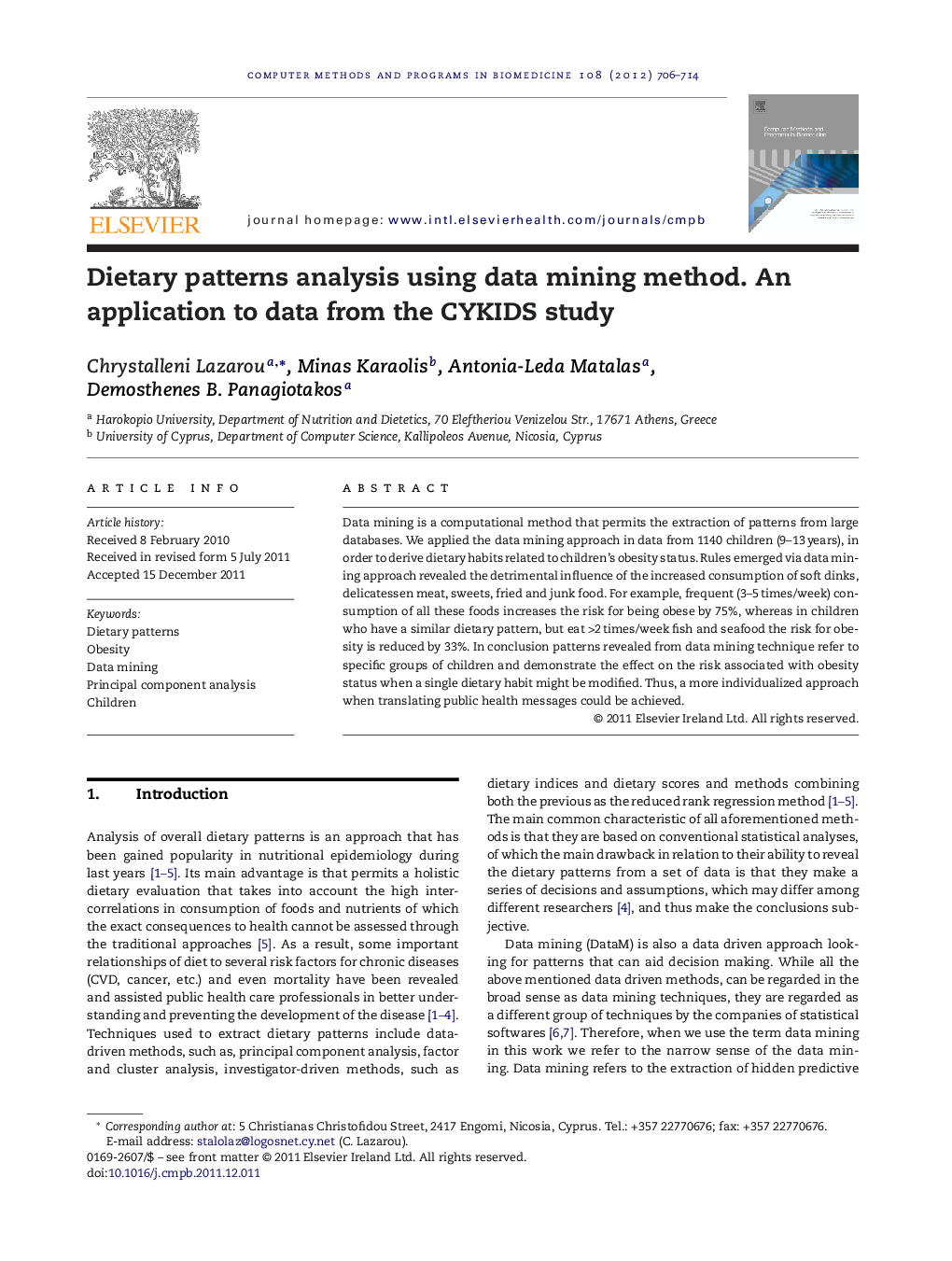| Article ID | Journal | Published Year | Pages | File Type |
|---|---|---|---|---|
| 467922 | Computer Methods and Programs in Biomedicine | 2012 | 9 Pages |
Data mining is a computational method that permits the extraction of patterns from large databases. We applied the data mining approach in data from 1140 children (9–13 years), in order to derive dietary habits related to children's obesity status. Rules emerged via data mining approach revealed the detrimental influence of the increased consumption of soft dinks, delicatessen meat, sweets, fried and junk food. For example, frequent (3–5 times/week) consumption of all these foods increases the risk for being obese by 75%, whereas in children who have a similar dietary pattern, but eat >2 times/week fish and seafood the risk for obesity is reduced by 33%. In conclusion patterns revealed from data mining technique refer to specific groups of children and demonstrate the effect on the risk associated with obesity status when a single dietary habit might be modified. Thus, a more individualized approach when translating public health messages could be achieved.
► This is one of the first attempts to apply the data mining approach for deriving dietary patterns from a population-based sample of children. ► Rules derived by applying data mining method showed that frequent consumption of fried food, delicatessen meat, sweets & junk food and soft drinks is associated with an increased risk for obesity, whereas frequent consumption of fish is more likely to be associated with normal weight. ► Data mining may be a useful tool in nutritional epidemiology, where large sets of data with many variables is usually the case, to effectively analyze it and reveal patters and associations that might not feasible to achieve via conventional statistics methods.
